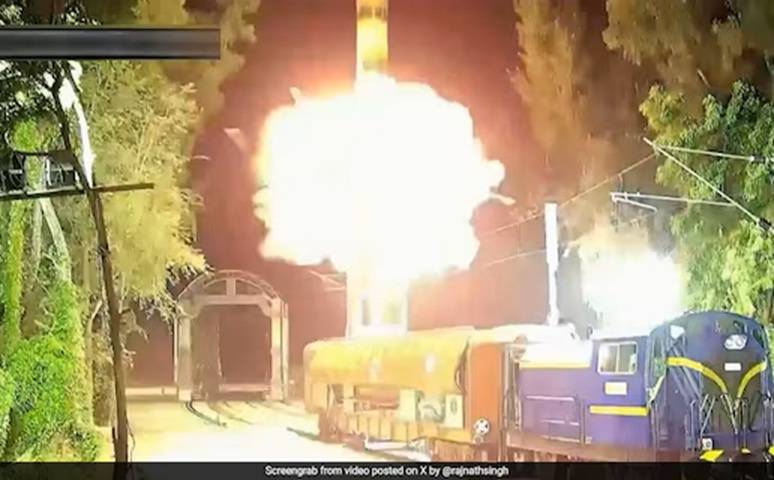India joins elite club with canisterised, rail-based missile launch system with 2,000 km range
Agni-Prime Missile Fired From Train: A Landmark in Indian Missile Technology
India has successfully test-fired its nuclear-capable Agni Prime missile — not from a traditional static launcher, but from a mobile platform pulled by an Indian Railways locomotive.
This groundbreaking achievement places India alongside military superpowers like the United States, Russia, and China, who have developed similar rail-based intercontinental ballistic missile (ICBM) systems.
Why This Agni-Prime Missile Test Is No Ordinary Launch
While India routinely conducts missile tests, this one stands out for several key reasons:
- Rail-Based Launch System: Missile was launched from a mobile rail launcher, not a fixed site.
- Strategic Mobility: The launcher can move across India’s 70,000 km rail network, enhancing surprise and deployment flexibility.
- Quick Response: Eliminates dependence on road-based systems, reducing reaction time.
- Stealth Factor: Rail tunnels can conceal missiles until launch, improving survivability during conflict.
Defence Minister Rajnath Singh on X:
“This successful test has put India in a group of select nations that have developed canisterised-launch systems from on-the-move rail networks.”
Agni-Prime Missile Capabilities at a Glance
| Feature | Specification |
|---|---|
| Range | Up to 2,000 km |
| Warhead | Nuclear-capable |
| Launch System | Rail-based mobile launcher |
| Mobility | Can operate across India’s vast rail network |
| Strategic Role | Intermediate-Range Ballistic Missile (IRBM) |
What Does a Rail-Based Missile System Mean for India?
With this test, the Indian military now gains several strategic advantages:
Increased Mobility
- Launches can now occur from remote locations, deep within Indian territory.
- Not dependent on road or air infrastructure for deployment.
Stealth and Surprise
- Missiles can be hidden in tunnels or stationed on trains, reducing detectability by enemy satellites.
Enhanced Survivability
- During wartime, rail-based systems can relocate frequently, making them harder to target.
Challenges of Rail-Based Missile Systems
Despite its benefits, this new capability comes with limitations:
- Fixed to Rail Tracks: Requires access to existing railway lines.
- Precision Limitations: Not all tracks allow for optimal launch conditions.
- Sabotage Risk: Rail lines are vulnerable and challenging to protect comprehensively during war.
Global Context: Who Else Has Rail-Based Missile Systems?
India now joins a very exclusive club of nations with this advanced capability:
Russia
- Pioneered the system with the RT-23 Molodets ICBMs in the 1980s.
- Later tested the Barguzin BZhRK platform.
United States
- Developed the Peacekeeper Rail Garrison during the Cold War.
- Canceled in 1991 post-Cold War; missiles returned to silos.
China
- Reportedly has rail-based missile launch systems integrated into its nuclear forces.
North Korea
- Claimed success with railway-borne missile launches in 2021, but operational reliability remains unclear.
Strategic Significance: Why This Matters for India’s Defence
Deterrence and Second-Strike Capability
- Rail-based systems offer higher survivability, enhancing India’s nuclear deterrence posture.
- Even in case of a first-strike scenario, rail-mounted missiles could survive and retaliate.
Storage and Deployment Flexibility
- Expands options beyond silos and road-mobile platforms.
- Useful in peacetime dispersion and wartime concealment.
The successful rail-based launch of the Agni Prime marks a technological and strategic leap for India’s missile program. In an era of evolving threats and high-tech warfare, mobility, stealth, and survivability have become as critical as range and payload.
With this innovation, India signals its readiness to defend its interests with greater flexibility and resilience, leveraging its vast railway infrastructure in a way few other nations can.



